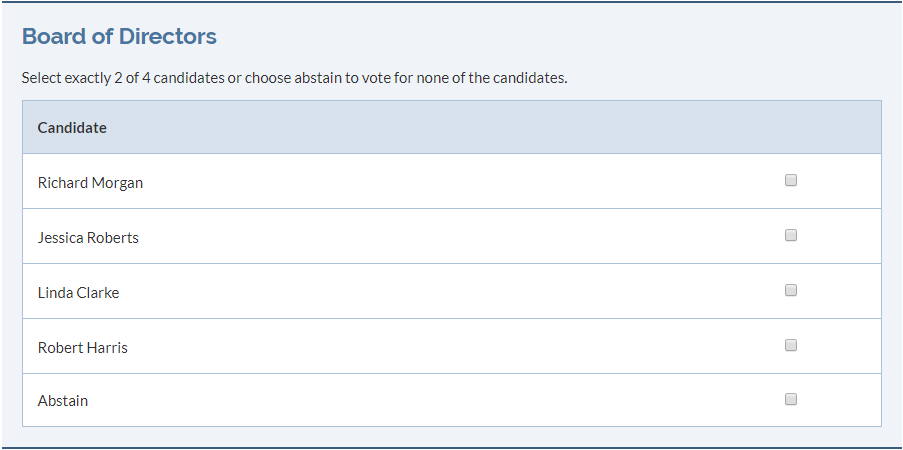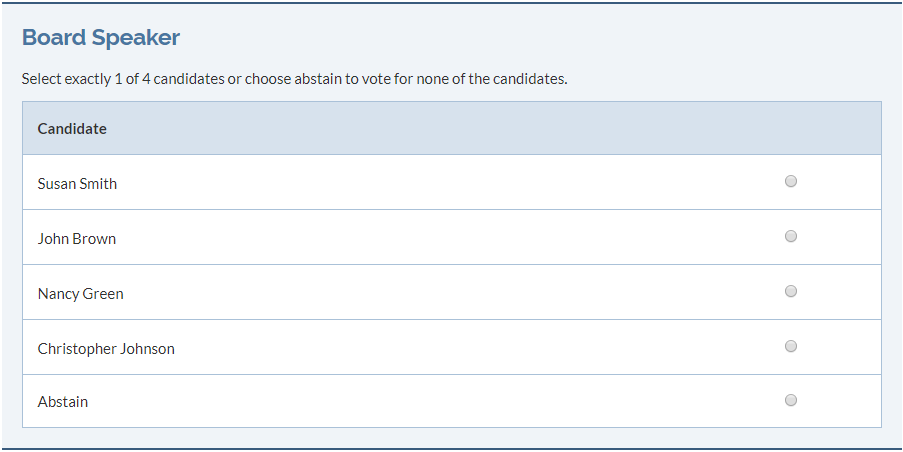Voting Process
Voters select 1 or more options (elect 1 out of 5 presidential candidates, elect 3 directors from 7 candidates, or choose yes or no to a bylaw amendment). It is commonly used throughout North America for civic, state, provincials and federal elections.

How the Results are Calculated

A simple vote counting algorithm in which ballots are counted and the candidate or candidates with the highest percentage of votes wins. Elections with more than 2 candidates, a majority of the votes (greater than 50% of the total) is not needed to win. For example, after an election is run, if candidate 1 has 25 votes, candidate 2 has 35 votes, and candidate 3 has 40 votes, candidate 3 wins even though they only have 40% of the total ballots cast.
When running a multi-seat election (3 directors are elected from 7 candidates) the candidate with the highest percentage will win the first seat, the second-highest percentage wins the second seat, and so on, until all seats are filled.